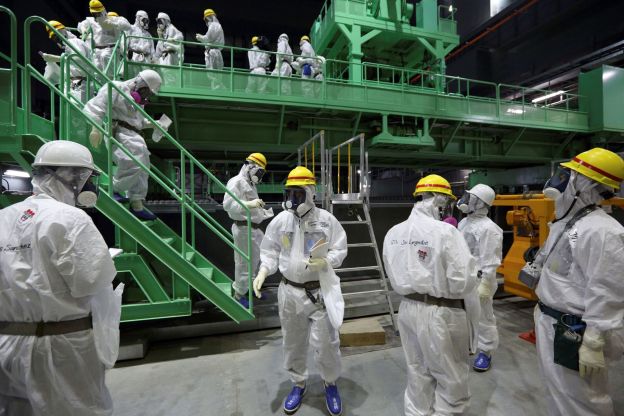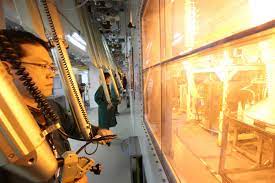See also Security Strategies of Threshold Nuclear Weapon States
Japan…had 54 reactors in operation before the Fukushima accident..,,. After the accident, which was of unprecedented scale, Japan promptly decided to stop all remaining nuclear power reactors in the country, but was not able to phase out nuclear energy like Germany. Instead, operation of these halted reactors has resumed since Shinzo Abe returned to the Prime Minister’s office in spite of massive protests and the objection of the majority of the public; Sendai 1 Reactor in Kagoshima Prefecture was restarted on August 11, 2015 and Sendai 2 Reactor successively went online on October 15, 2015….
Japan is the only country in the world that is permitted to reprocess its spent fuel, which means it can possess plutonium — a weapon-usable material…Originally, Japan envisioned fast breeder reactors (FBR) for generating electricity with plutonium separated from reprocessing. Japan’s sodium-cooled FBR Monju, which is supposed to produce more fuel than it consumes and thus is regarded as a dream reactor, has never been realized mainly because of insuperable technical problems, despite astronomical investment that exceeded 1 trillion Japanese Yen….
Meanwhile, it has never been easy to start up the reprocessing plant in Rokkasho Village, Aomori Prefecture. This reprocessing plant was initially planned to start its operation in 2000, but completion of reprocessing plant construction has been delayed more than twenty times. Moreover, the construction cost has surged up to approximately 22 billion USD, almost four times higher than the original cost planned back in 1989. And on November 16, 2015, Japan Nuclear Fuel Ltd. (JNFL), the operator of reprocessing plant, announced that the operation of the reprocessing plant is postponed again to as late as September 2018. JNFL’s President Kenji Kudo reported that a separate plant for producing MOX fuel had also been delayed by early 2019….
Nonetheless, the Japanese government still shows reluctance to withdraw from reprocessing with the excuse of its scarcity of natural resources. Without a technical way out, however, the plutonium stockpile of Japan continues to rise. As for July 2015, its plutonium stockpile reached 47.8 metric tons – 10.8 tons in Japan, 16.3 tons in France, and 20.7 tons in the United Kingdom – the fifth largest next to the United Kingdom, France, Russia, and the United States. Considering the fact that Japan is not a nuclear-armed state, this number is obviously an outlier. For instance, Germany, which also does not possess nuclear weapons, only had 3 tons of separated plutonium at the end of 2013…. [B]oth Rokkasho Village and Aomori Prefecture intimidated the central government into adhering to [opening the Rokkasho reprocessing plant]. [T]hey contended that the more than 3,000 tons of spent fuel in the area should otherwise be transferred back to the reactors where the spent fuel was originally produced. This alternative however, is politically and technically implausible because the host communities of reactors also expect spent fuel to be removed from their backyards almost immediately…Japan’s unusual surplus of plutonium creates tremendous political pressures for the Japanese government. Japan’s neighbors like China and South Korea often become suspicious of Japan’s real reasons for having that amount of plutonium.
Furthermore, Japan’s recent performance triggered a backlash even from the IAEA, whose head is a former Japanese diplomat; 640 kilogram of unused plutonium was not included in Japan’s annual reports to IAEA in 2012 and 2013. IAEA experts criticized this as “inappropriate omission” though JAEC explained that the stock was part of MOX fuel stored in a reactor that was not in operation during that period of time, and accordingly assumed exempt from reporting requirements. Japan has insisted that it would be impossible to inappropriately separate plutonium at the reprocessing plant in Rokkasho Village under the IAEA’s 24-hour surveillance. However, surveillance burdens for safeguards have aggravated simply because of the absolute amount of stockpile.
Excerpts from Eunjung Lim, Japan’s Nuclear Trilemma, Jan. 19, 2016





